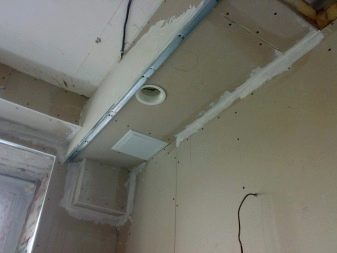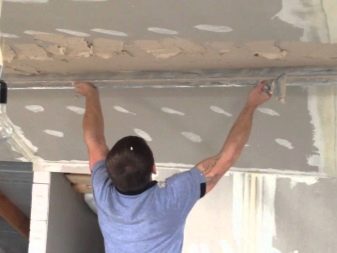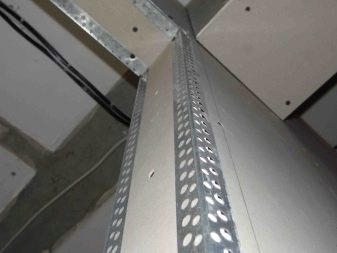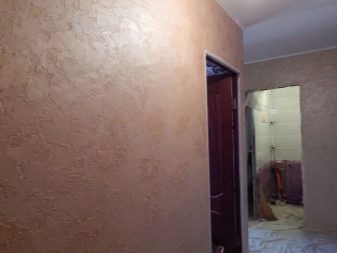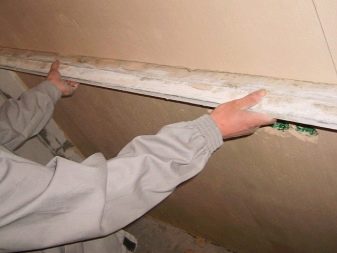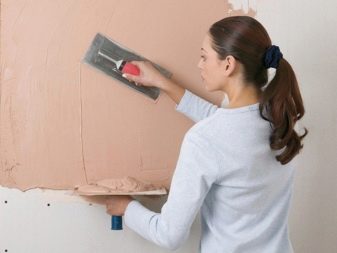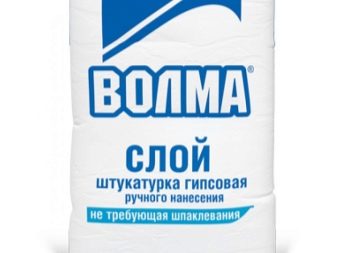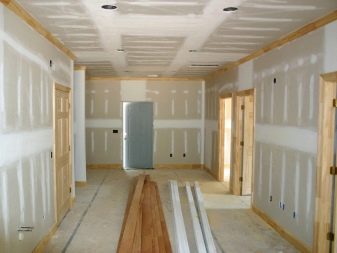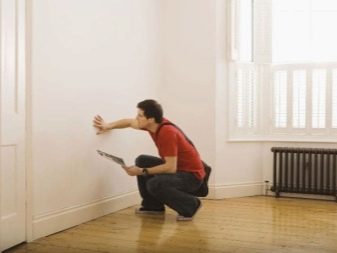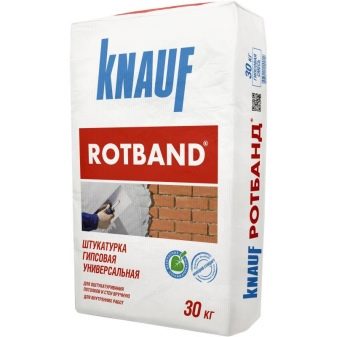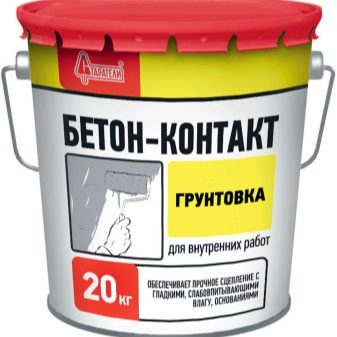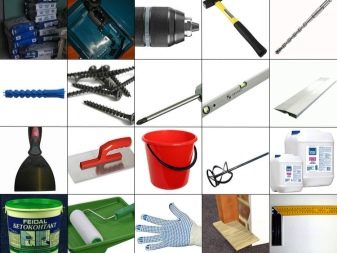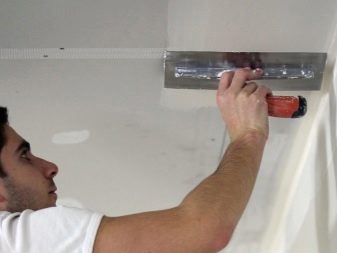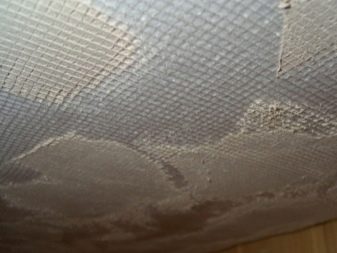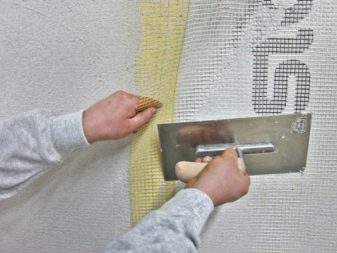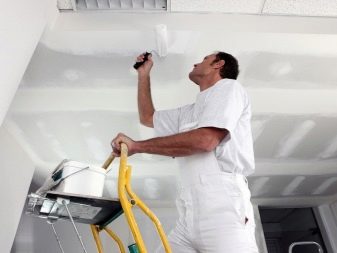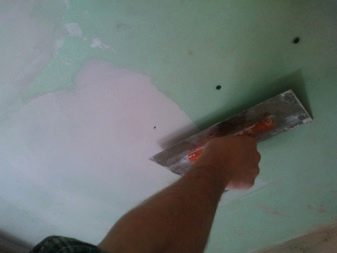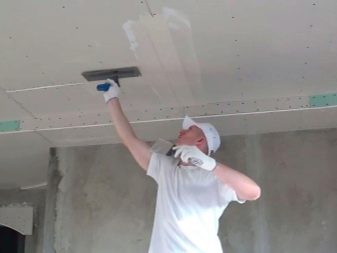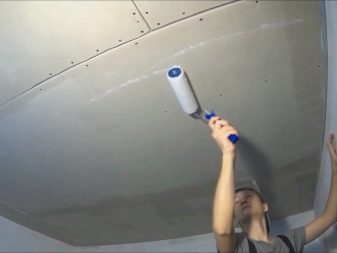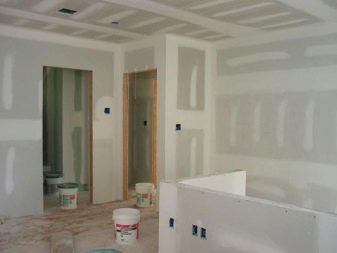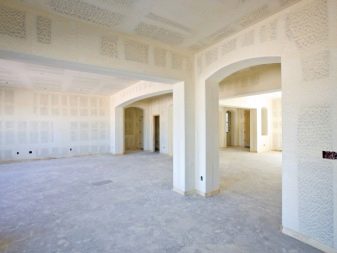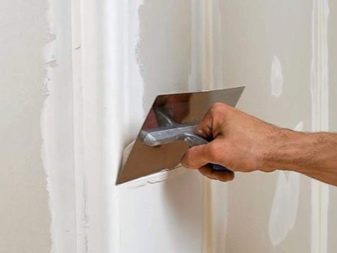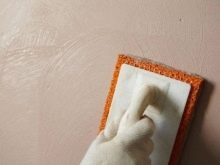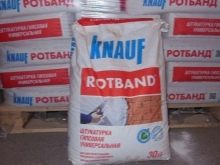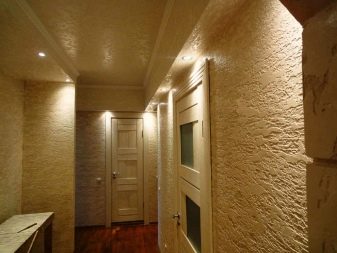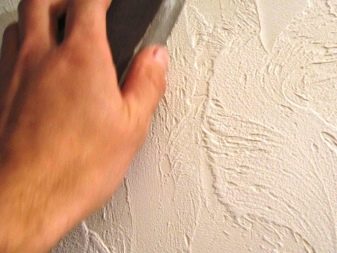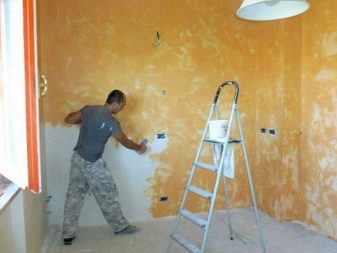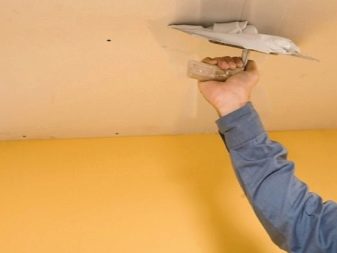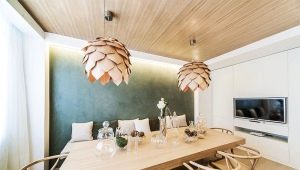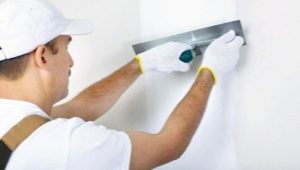Plasterboard plaster: what and how to do it?
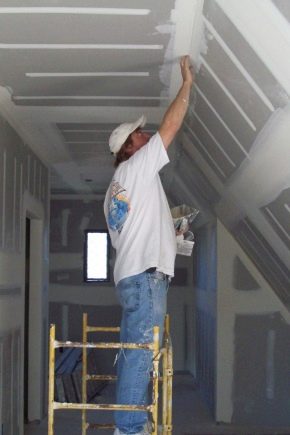
Plastering is applied to many materials: it is a brick, and various types of concrete blocks. There is a popular opinion that there is no need to plaster drywall. But this is a mistake: there are many situations where such work is necessary. When performing it has its own subtleties and nuances that must be taken into account by all builders. Much attention should be paid to the methods of applying the solution on the seams or borders of sheets.
Special features
Drywall is used to make a partition, wall or multi-level ceiling. It allows you to hide curved surfaces, consistently replacing the wet finish.Plastering gypsum gypsum-based mixtures can be in a dry room. For moisture resistant sheets, it is recommended to use a cement mixture, and polymeric materials can be used in almost any case.
Why do it?
Everyone knows that drywall is almost perfect - there is no special need to level it. Plaster is used only to improve the appearance of the sheets. But these compounds must be applied in other cases when it is necessary to cover the joints between the sheets, various notches and self-tapping screws sticking out. In fact, the function of putty is assigned to plaster compositions, they are used when wallpapering or laying tiles is applied to drywall. Under the decorative plaster such material is also quite acceptable.
Among the experts there is a serious discussion whether it is possible to plaster plasterboards in principle. Some of the disputants indicate that low-quality material with an insufficient level of moisture resistance cannot be covered with plaster: this will lead to a gradual deformation, since the applied layer will be damaged by the released moisture.
There is also an opinion that it is quite possible to use plaster on GKL.Without going into the decision of the question of who is right, you need to specify - such processing is acceptable only in strictly necessary cases.
When walls lined with sheets of gypsum plasterboard have pronounced deformations, the plaster layer will only worsen the situation. It would be much more correct to remove the cause of the distortions, rather than fight with them. Another thing, if found only minor deviations from the normal terrain. Also apply basic plaster required before decorative plastering. It allows you to guarantee accelerated drying and improve the polymerization process.
Material selection
When it is necessary to close the joints or caps of self-tapping screws, dry plaster is applied on a plaster basis, although some masters prefer to use ready-made pastes in buckets. For moisture-resistant sheets of drywall is better to use mixtures based on acrylic.
The actual difference between putty and plaster is reduced to the grain size of the material. By reducing it, the developers make thinner and applied layer, besides, it becomes less rough. It should be noted that in any finishing material the real value of fractions is lessWhat is the largest manufacturer. But at the same time, in the production of fillers, raw materials are sifted more carefully than with the release of plaster.
To align significant cavities and dimples, it is advisable to first apply the plaster, and then, when it dries, to complete the process of putty. To mask the joints, it is advisable to immediately put the putty in motion.
Experts believe that the best type of plaster on gypsum board is a gypsum variety of plasterboard. But it is also inferior to the filler mixture, because it does not allow to create the thinnest layer possible. As for the brands, the best solution is to consider the material “Rotband” from the well-known company “Knauf”. In addition to the main coatings, you can apply the primer type "concrete contact". But no formulations will not help if you apply them correctly.
Preparation and tools
For the processing of drywall will require the following materials and tools:
- ready dry or pasty mixture;
- capacity for the preparation of dry formulations;
- primer;
- spatulas with a narrow and wide blade;
- grid for painting;
- paint brush (preferably several different in length);
- construction knife;
- grouting equipment.
Finishing technology
There are universal points that must be observed regardless of the type of facial finish.
The edges of plasterboard walls should be cut at a 45 degree angle, and a right angle forms at the intersections of the sheets. For chamfering, small planers are sometimes used, which help to prepare the material before attaching it to the wall. Then they clean the dust with brushes or brushes, and chamfer the ground itself (this helps to prevent cracking of the seams). For mixing the composition it is necessary to use cold water.
The seams of drywall sheets are required to be filled with putty and leveled along the entire length. For this it is recommended to use narrow spatulas.
Then the solution is closed with a hardening net, which needs to be pressed a little. Then the grid needs to be blocked completely with an additional layer of putty. There is already used a spatula with a wide blade.
Treatment of drywall at the joints is as follows:
- chamfering at the edges;
- ground treated area;
- grease it with putty;
- cover with reinforcing mesh;
- use the final layer (for a flat seam it is recommended to use a mesh);
- finishes all the rubbing of the coating with small graters.
For painting
Each option plastering GKL has its own characteristics. Is no exception and preparation for painting material. It is performed by any true professional to ensure the actual quality of the coating. The leveling of the layer is done with spatulas with wide blades, then the material is rubbed to perfect smoothness, and a primer is applied on top. Drywall is being finished with sandpaper. It is necessary to work very carefully, because the paint not only fails to hide the defects, but only emphasizes them.
Under the wallpaper
Imitation of wall papering is created by cellulose-based mixtures. Various fillers are added to it: silk, cotton, acrylic. Also in the composition of the liquid wallpaper includes pigments and some other components. Such mixtures are supplied in bags, before use, they are slightly moistened with water. The walls need to be primed, the material itself is smoothed with a spatula after application.
"Rotband"
This is really a qualitative composition of German production. But it is also very important for him to have a good surface preparation with the help of deeply penetrating soil, which improves adhesion with the applied material. No less significant is the fact that the primer interferes with the impregnation of sheets of drywall with water, which inevitably stands out from any plaster.
When applying a priming mixture, any omissions are unacceptable, and the joints are glued with ribbons (serpyanki), and then covered with special reinforcing compositions. On a dried surface, such lines are overwritten, removing small deformations and flows.
To work with the "Rotband" recommended spatula with a blade from 30 cm, it is held at an angle of 30-40 degrees. Strong pressure is contraindicated: it provokes the appearance of waves.
If the defects of the original surface are significant, they work in two steps: 0.3-0.5 cm each. The final composition is applied with a maximum of 0.1 cm, the most insignificant deviations from the even layer are unacceptable. After drying (24-48 hours), the plastered walls will be perfectly white.
Decorative plaster
Decorative plaster can also be applied to the drywall surface. Venetian coating is a combination of various colors and a glossy outer layer. In addition to fully prepared mixtures, there are also obtained by hand: they are prepared by adding various colors to the universal gypsum material.Most often, the first layer is made white, setting the future relief, the second one determines the texture and color. The third layer enhances tonality, makes single segments lighter or darker.
Textured type of plaster emit conditionally, because almost any mixture allows you to create an elegant relief. But there are already familiar options for professionals like “bark beetle”. Depending on personal needs and taste, you can choose abstract compositions and geometric shapes. Any builder, at least minimally experienced, can make both a duplicate pattern and a chaotic image.
The tools used are various: they are not only spatulas, but also trowels, sponges, specially ordered stamps, coarse wire brushes and the like.
Plastering arch also has its own characteristics. First of all, the perimeter is thoroughly cleaned, the same manipulation is carried out with the joints. Further, the ends are polished, which protrude at least a little beyond the contours of the arch. Then drywall is thoroughly impregnated with a primer, the protrusions are covered with a perforated corner. Then the reinforcing layer is used - this is the end of the preparation.
Tips and tricks
Quite often a situation arises when there is no time for an exact calculation of proportions. Then it is necessary to use an indirect method: ½ capacity is filled with water, then material is added to it in small portions, after which the resulting composition is distributed as uniformly as possible over the surface. When the plaster or putty stops to go under water, you need to begin to mix it. The best tool for mixing plaster and putty is a small spatula.
It is always necessary to monitor the suitability of the prepared solutions and the drying time, which are determined by the type of binding components. Gypsum mixes become 100% solid after 60 minutes (for example, KNAUF Uniflot). If we take "WEBER-BETONITE" with marble filler, the operating time can reach 48 hours.
The caps of the self-tapping screws must be embedded in the sheets, they are covered with a small mass of putty, which is leveled with a spatula (its movement begins from the top left).
About why it is necessary to plaster drywall, see the video below.
